Tom's Hardware Verdict
The DeepCool GamerStorm DQ-M V2L 850W achieves high performance in all areas, but it is noisy under high loads, and we expected to find better parts at its internals, given the ten-year warranty.
Pros
- +
Full power at 47 degrees Celsius
- +
Good overall performance
- +
Efficient
- +
Highly efficient 5VSB rail
- +
Long hold-up time
- +
Fully modular
- +
Large enough distance between peripheral connectors
Cons
- -
Low-quality FETs used
- -
Weak boost diode in the APFC converter
- -
Noisy
- -
Poor transient response at 3.3V
- -
Lower than 70% efficiency with 2% load
- -
Not compatible with the alternative sleep mode
Why you can trust Tom's Hardware
The DeepCool GamerStorm DQ-M V2L 850W uses a new platform from Channel Well Technology (CWT), which has the codename GPX. In essence, GPX platform is a downgraded GPU design (which we have seen in the Bitfenix Whisper line and the older DeepCool GamerStorm models). Its goal is to offer high enough performance at a lower price, meaning that it doesn't use the same high-quality parts that the GPU design utilizes. With higher quality FETs and a stronger boost diode, the GamerStorm DQ-M V2L 850W could be included in our Best Power Supplies article, but performance alone isn't enough.
The design needs to be reliable enough to last for years to come, even under tough operating conditions, and it should also retain its good performance over time, because even PSUs age. DeepCool's new power supply line looks interesting, but it doesn't pose any threat to the highly popular Corsair RMx and Seasonic Focus Plus Gold lines.
DeepCool decided to expand its GamerStorm brand with a new PSU line, with the codename DQ-M V2L. This line consists of three members with capacities ranging from 650W to 850W. Compared to the original DQ-M line, which is based on the top-notch CWT GPU platform, the DQ-M V2L uses the inferior CWT GPX platform with some modifications, which allow for higher performance and increased reliability. The latter is depicted on the ten-year warranty that supports these new PSU models. Finally, all DQ-M V2L units feature a single +12V rail design, contrary to the DQ-M members, which had several +12V rails.


Product Photos



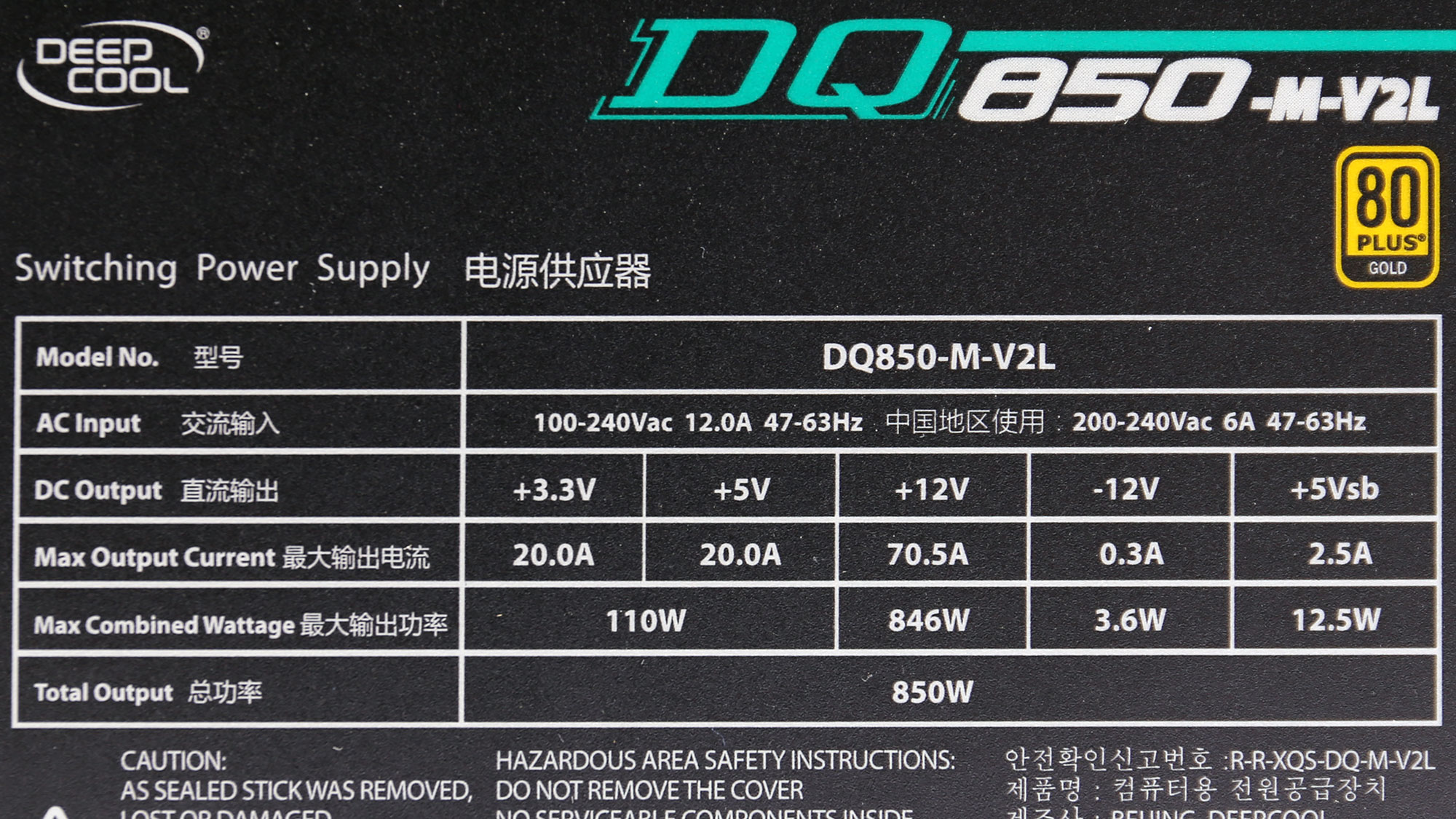

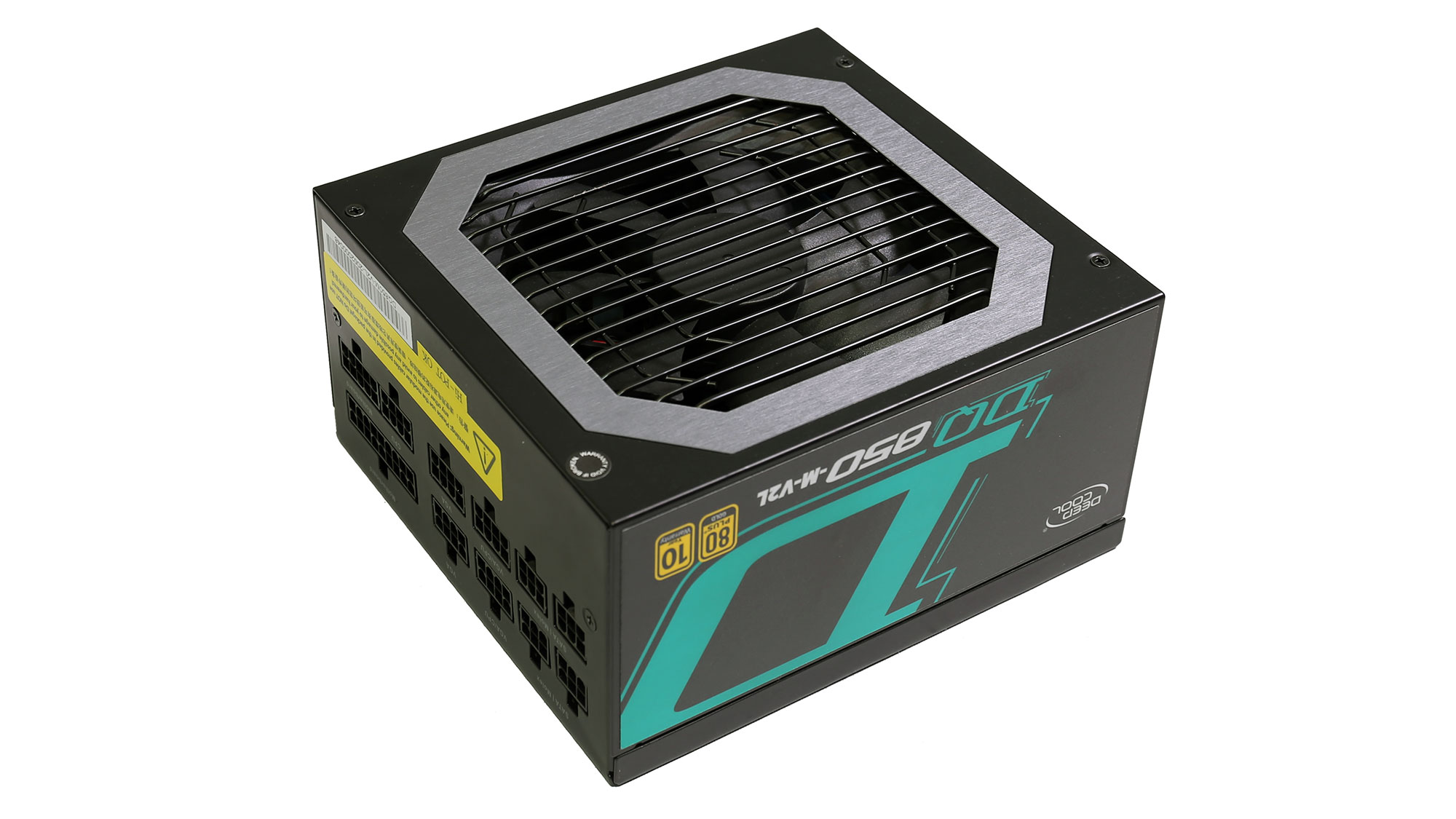

The GamerStorm DQ-M V2L 850W is the flagship of the line, featuring enough power (and connectors) to support a potent gaming system. It is a fully modular power supply with regular dimensions. A few years ago a 850W PSU with 160mm depth would be considered compact, but nowadays, we find similar capacity PSUs with only 140mm depth. With a quick look at the specifications, we wonder why DeepCool didn't use a larger fan (e.g., 140mm instead of 120mm), since the chassis is large enough to accommodate it. A larger fan can provide the same airflow with a smaller one, but at lower speeds so its noise output will be lower.

Product Photos






Specifications
|
Manufacturer (OEM) |
|
|
Max. DC Output |
850W |
|
Efficiency |
80 PLUS Gold, ETA-A (88-91%) |
|
Noise |
LAMBDA-S+ (35-40 dB[A]) |
|
Modular |
✓ (Fully) |
|
Intel C6/C7 Power State Support |
✓ |
|
Operating Temperature (Continuous Full Load) |
0 - 50°C |
|
Over Voltage Protection |
✓ |
|
Under Voltage Protection |
✓ |
|
Over Power Protection |
✓ |
|
Over Current (+12V) Protection |
✓ |
|
Over Temperature Protection |
✓ |
|
Short Circuit Protection |
✓ |
|
Surge Protection |
✓ |
|
Inrush Current Protection |
✓ |
|
Fan Failure Protection |
✗ |
|
No Load Operation |
✓ |
|
Cooling |
120mm Sleeve Bearing Fan (HA1225H12S-Z) |
|
Semi-Passive Operation |
✗ |
|
Dimensions (W x H x D) |
150 x 85 x 160mm |
|
Weight |
1.53 kg (3.37 lb) |
|
Form Factor |
ATX12V v2.4, EPS 2.92 |
|
Warranty |
10 Years |
Power Specifications
| Rail | 3.3V | 5V | 12V | 5VSB | -12V | |
|---|---|---|---|---|---|---|
| Max. Power | Amps | 20 | 20 | 70.5 | 12.5 | 0.3 |
| Watts | 110 | 846 | 12.5 | 3.6 | ||
| Total Max. Power (W) | 850 |
Cables & Connectors
| Modular Cables | Cable Count | Connector Count (Total) | Gauge | In Cable Capacitors |
|---|---|---|---|---|
| ATX connector 20+4 pin (550mm) | 1 | 1 | 18AWG | No |
| 4+4 pin EPS12V (700mm) | 2 | 2 | 18AWG | No |
| 6+2 pin PCIe (500mm+100mm) | 2 | 4 | 18AWG | No |
| SATA (550mm+150mm+150mm+150mm) | 1 | 4 | 20AWG | No |
| 4-pin Molex (450mm+150mm) / SATA (+150mm+150mm) | 3 | 6 / 6 | 20AWG | No |
| AC Power Cord (1380mm) - C13 coupler | 1 | 1 | 18AWG | - |
The ATX cable could be a bit longer, reaching 600mm, to ensure compatibility with full tower chassis. The length of the EPS connectors is satisfactory, but 50mm more wouldn't hurt.
It isn't common to see six 4-pin Molex connectors, even in 850W PSUs. DeepCool thought that users would like to have a large number of these connectors to power peripheral devices that need more juice than what SATA connectors can provide. It is nice also to see a large enough distance between peripheral connectors.




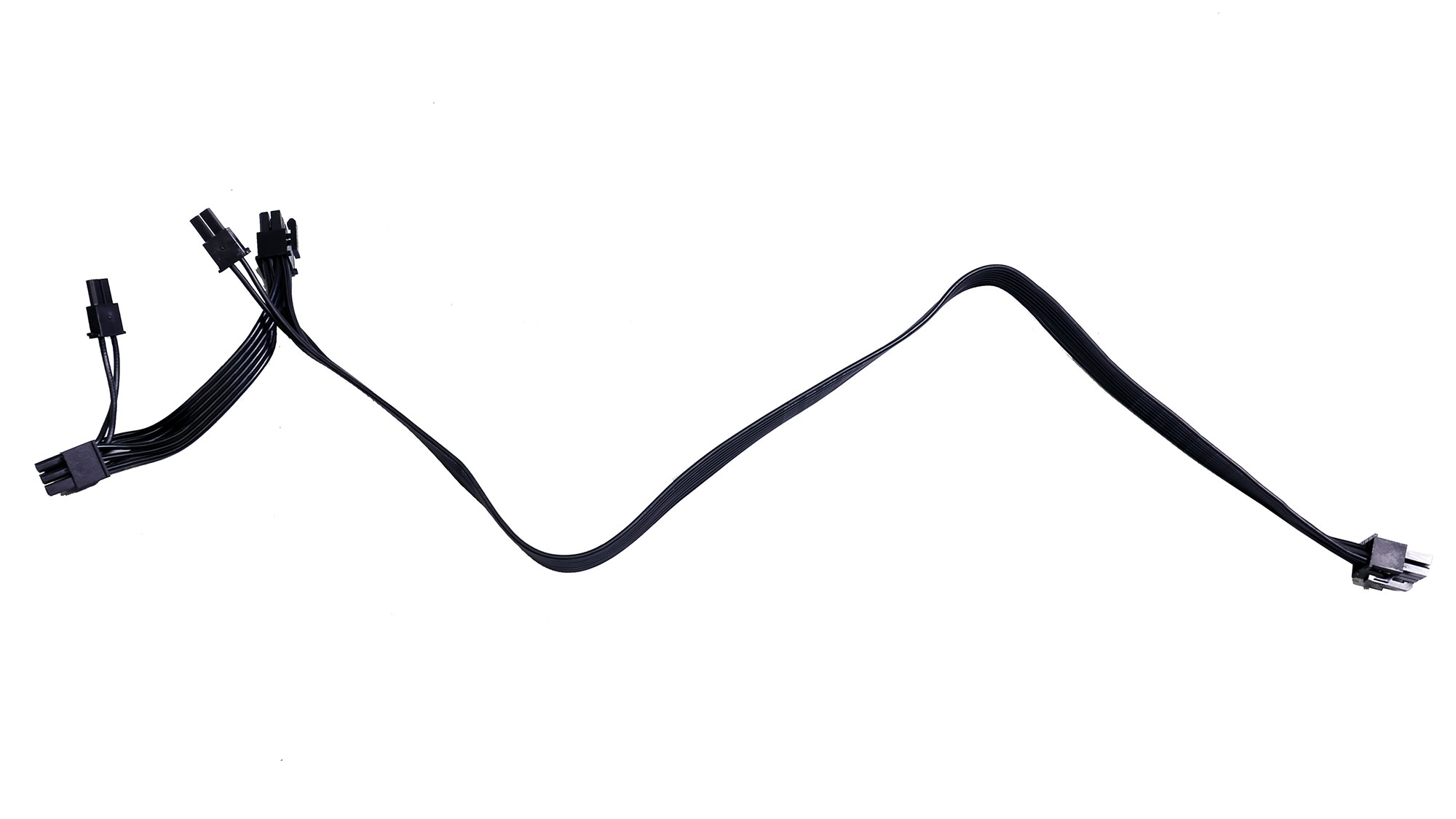



Cable Photos
Component Analysis
We strongly encourage you to have a look at our PSUs 101 article, which provides valuable information about PSUs and their operation, allowing you to better understand the components we're about to discuss.
Get Tom's Hardware's best news and in-depth reviews, straight to your inbox.
| General Data | - |
| Manufacturer (OEM) | CWT |
| PCB Type | Double Sided |
| Primary Side | - |
| Transient Filter | 4x Y caps, 2x X caps, 2x CM chokes, 1x MOV, 1x CAP200DG (Discharge IC) |
| Inrush Protection | NTC Thermistor (SCK055) & Relay |
| Bridge Rectifier(s) | 1x GBU1506 (600V, 15A @ 100°C) |
| APFC MOSFETs | 2x Great Power GP28S50 (500V, 28A, Rds(on): 0.125Ohm) |
| APFC Boost Diode | 1x ON Semiconductor FFSP0665A (650V, 6A @ 153°C) |
| Hold-up Cap(s) | 1x Nippon Chemi-Con (400V, 680uF, 2,000h @ 105°C, KMR) |
| Main Switchers | 4x Silan Microelectronics SVF20N50F (500V, 12.6A @ 100°C, Rds(on): 0.27Ohm) |
| APFC Controller | Champion CM6500UNX & Champion CM03X |
| Resonant Controller | Champion CM6901X |
| Topology | Primary side: APFC, Full-Bridge & LLC converter Secondary side: Synchronous Rectification & DC-DC converters |
| Secondary Side | - |
| +12V MOSFETs | 6 x IPS 014N04SA |
| 5V & 3.3V | DC-DC Converters: 4x Sync Power SPN3006 (30V, 57A @ 100°C, Rds(on): 5.5mOhm) PWM Controller: ANPEC APW7159C |
| Filtering Capacitors | Electrolytic: 3x Nippon Chemi-Con (1-5,000h @ 105°C, 16V, KZE), 9x Nippon Chemi-Con (4-10,000h @ 105°C, 5V - 16V, KY), 1x Nippon Chemi-Con (4-10,000h @ 105°C, 25V, KYA), 1x Nippon Chemi-Con (1-2,000h @ 105°C, 16V, KMG), 1x Nichicon (1,000h @ 105°C,16V, VZ) Polymer: 23x FPCAP |
| Supervisor IC | Sitronix ST9S429-PG14 (OVP, UVP, OCP, SCP, PG) |
| Fan Model | Hong Hua HA1225H12S-Z (120mm, 12V, 0.58A, Rifle Bearing Fan) |
| 5VSB Circuit | - |
| Standby PWM Controller | Power Integrations TNY287PG |

Overall Photos



The GPX platform is a downgraded version of the GPU design, so we didn't expect to find top-notch quality parts and, in some areas, e.g., in the APFC converter, indeed this is the case. Compared to other 850W units with similar specs, this one uses a notably weaker boost diode in the APFC circuit, and on top of that, the quality of the FETs that CWT used is not high. For example, the Silan Microelectronics FETs are also used in the much more affordable Corsair CX450 (the one made by CWT). It would be ideal if CWT used Infineon or On Semiconductor FETs, but this would affect the production cost.
The good thing is that a full-bridge topology is used, while the GPU platform uses half-bridge. Briefly, a full-bridge topology can deliver more power, with the proper components, and it has lower energy losses than a half-bridge configuration. Nonetheless, in radiated EMI, the half-bridge converter has the edge over the full-bridge converter.

Transient filter



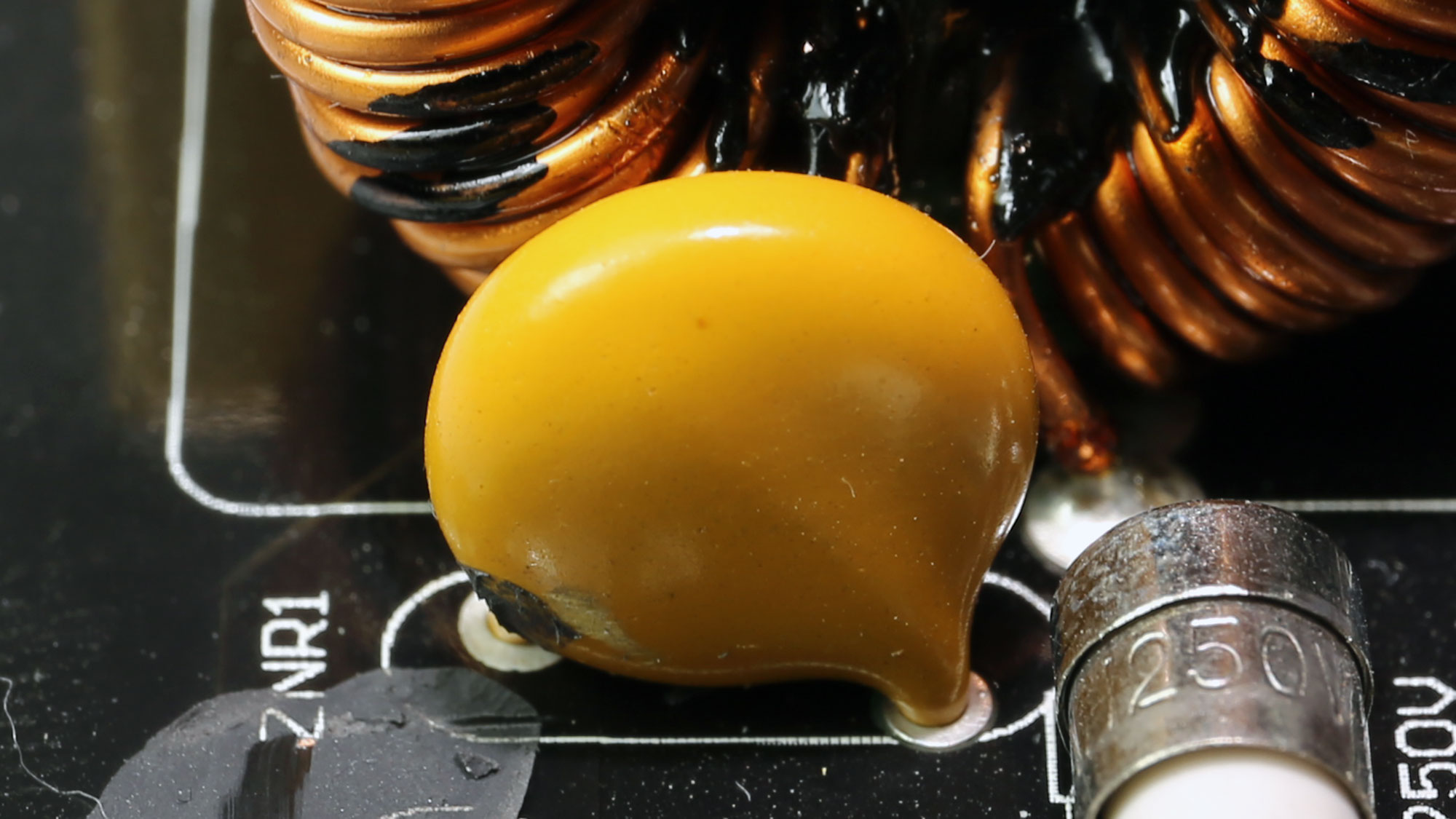

The transient filter includes all necessary components to restrict conducted EMI effectively.

Bridge rectifiers
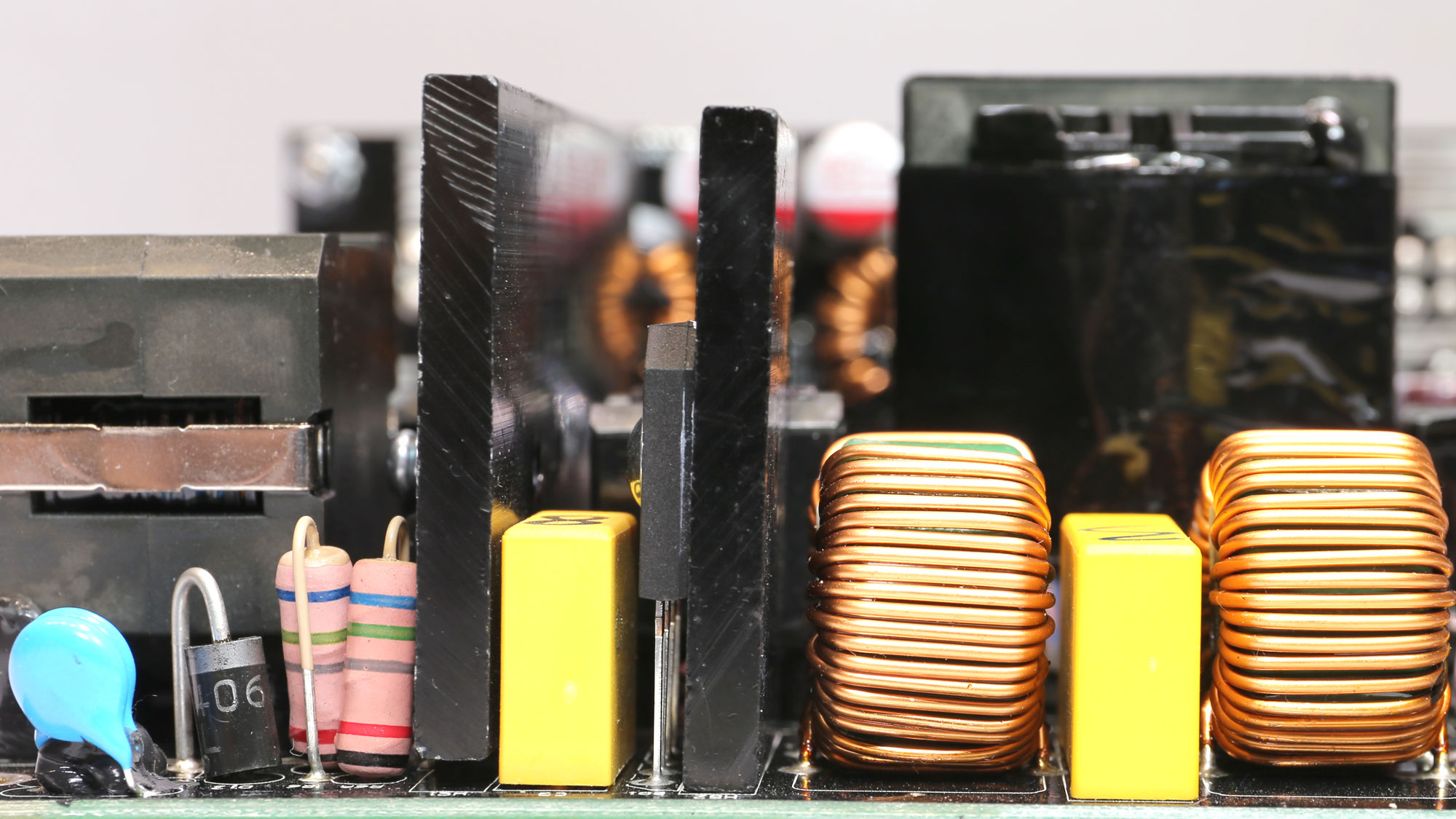
The single bridge rectifier is bolted on the primary heatsink. The DQ850-M, based on the GPU platform, also uses a single bridge rectifier with similar specifications.

APFC converter



In the APFC converter, we find two Great Power FETs, with model number GP28S50 and a single boost diode, which might be provided by a good manufacturer, but it isn't so strong. Usually, we find 8A boost diodes in higher-end 850W units. The DQ-850M uses an Infineon IDH08G65C5 (650V, 8A @ 145°C), for example.

Main FETs and primary transformer




It is nice to see a full-bridge topology, but we cannot say the same for the primary switching FETs. To keep the cost down, CWT used more affordable FETs compared to the ones that the DQ850-M has in the same stage. To speak with numbers, two Fairchild FCPF125N65S3 FETs (DQ850-M) cost $5.62 while four Silan Microelectronics SVF20N50F go for $3.26. Saving $2.36 in the primary FETs alone is a huge deal!

12V FETs and VRMs

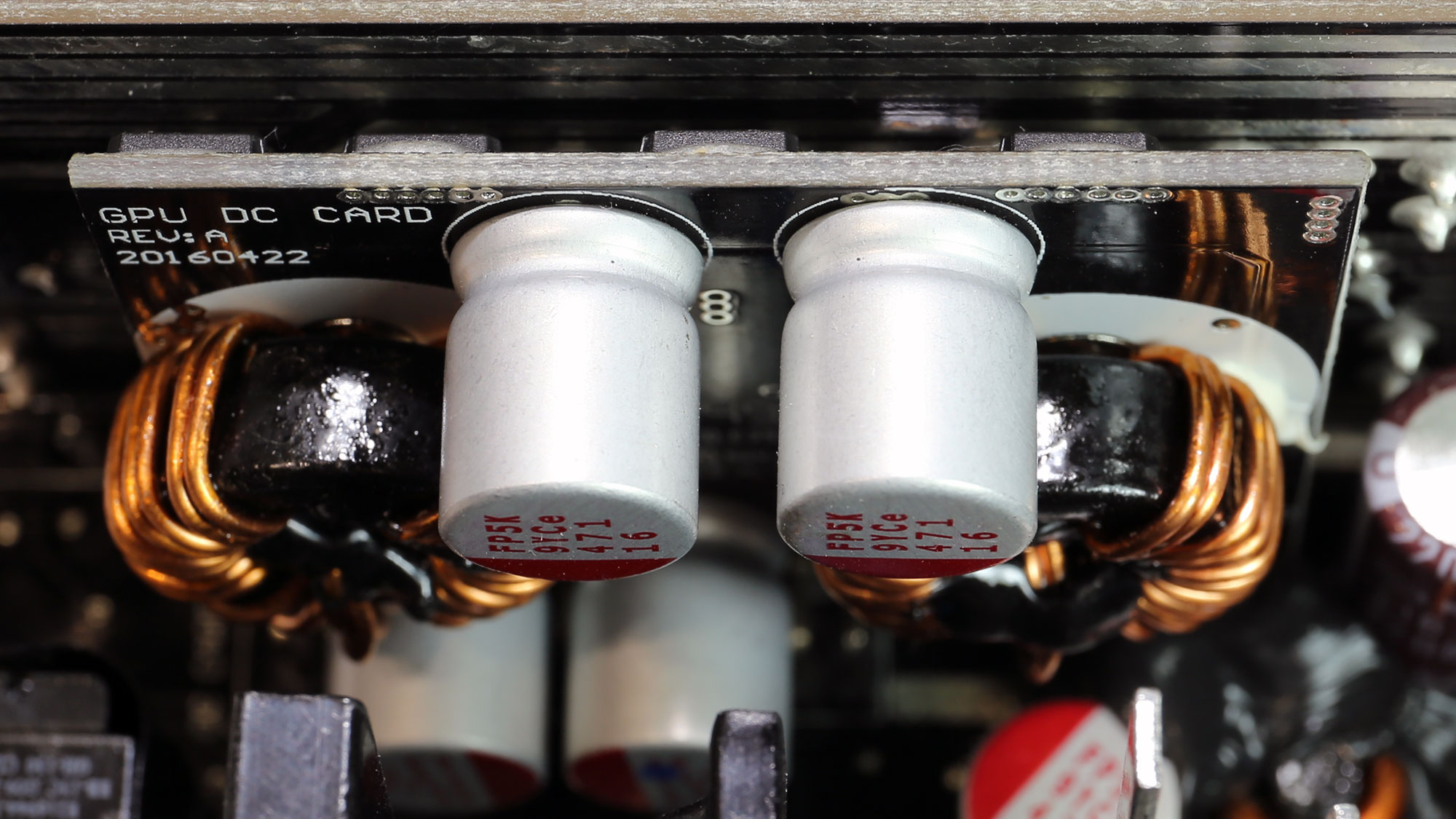
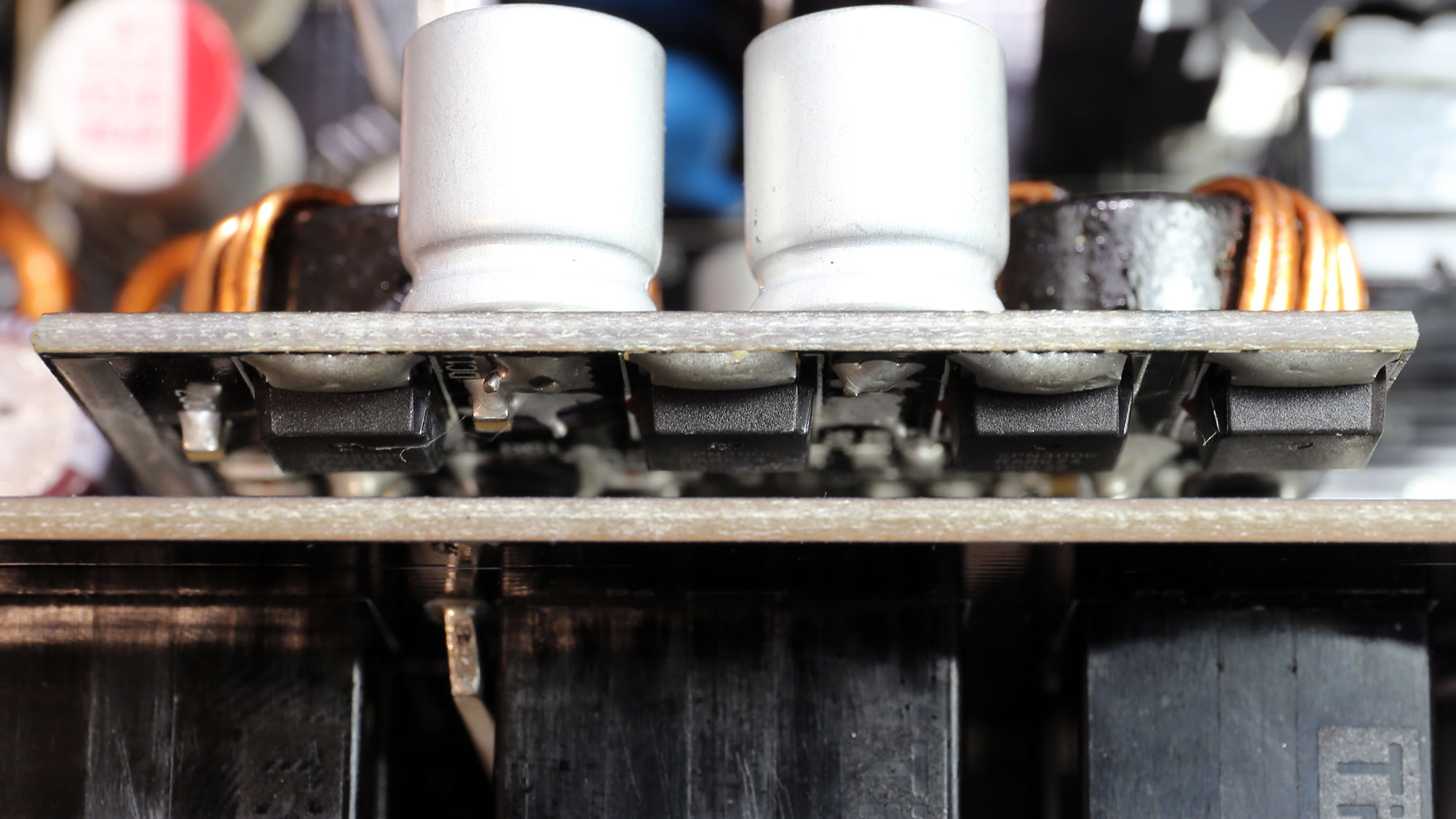
The +12V rail uses six InPower Semiconductor FETs, while the pair of DC-DC converters that handle the minor rails utilize four Sync Power FETs.
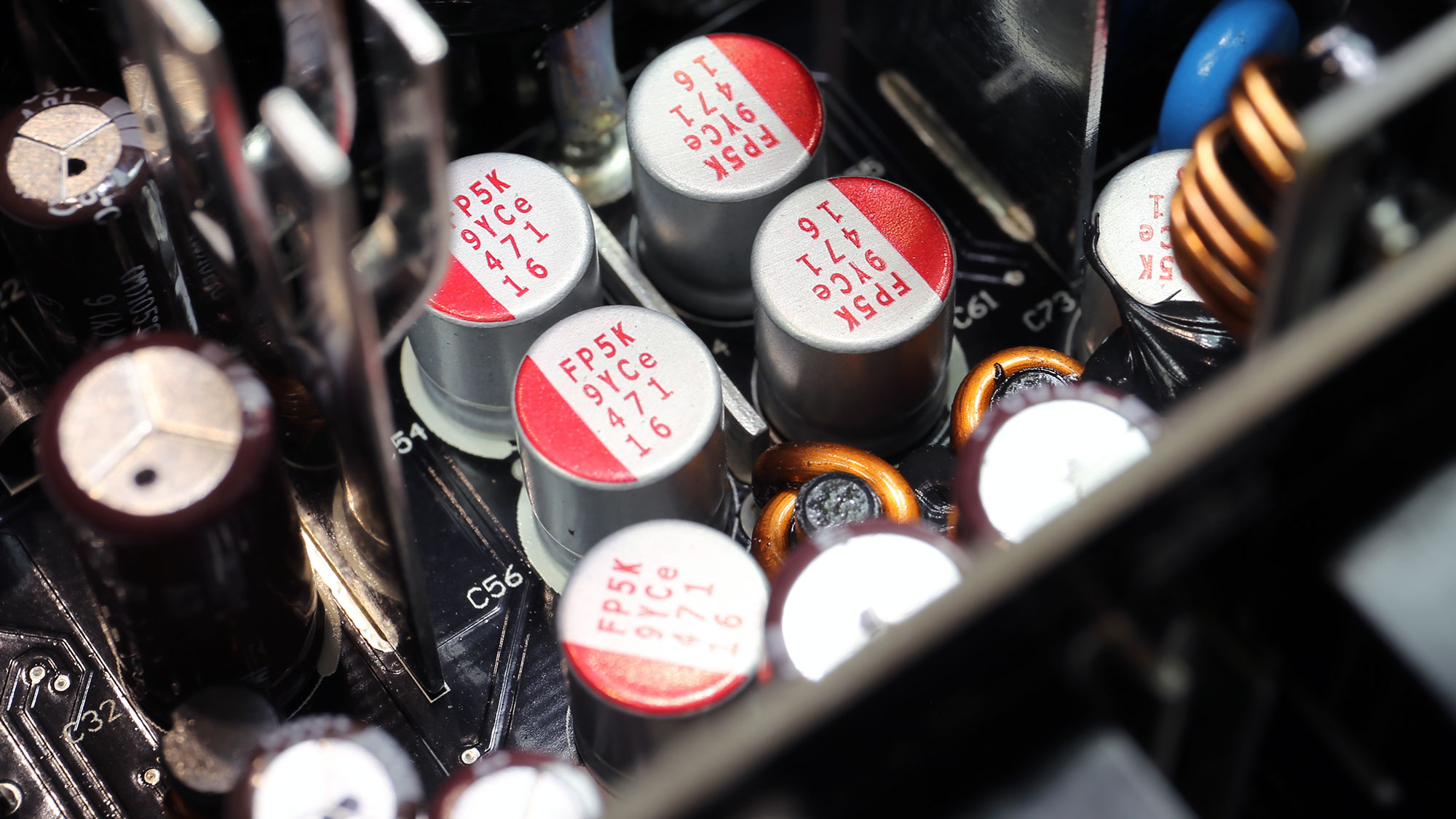
Filtering caps


The majority of electrolytic filtering caps are by Chemi-Con. Besides the high-end KY and KYA lines, we also find four lower-end KZE and KMG caps, along with a single Nichicon VZ, with only 1,000h lifetime. CWT also used a large number of polymer caps, which are made by FPCAP.

5VSB Circuit

The standby circuit is controlled by a Power Integrations TNY287PG IC.
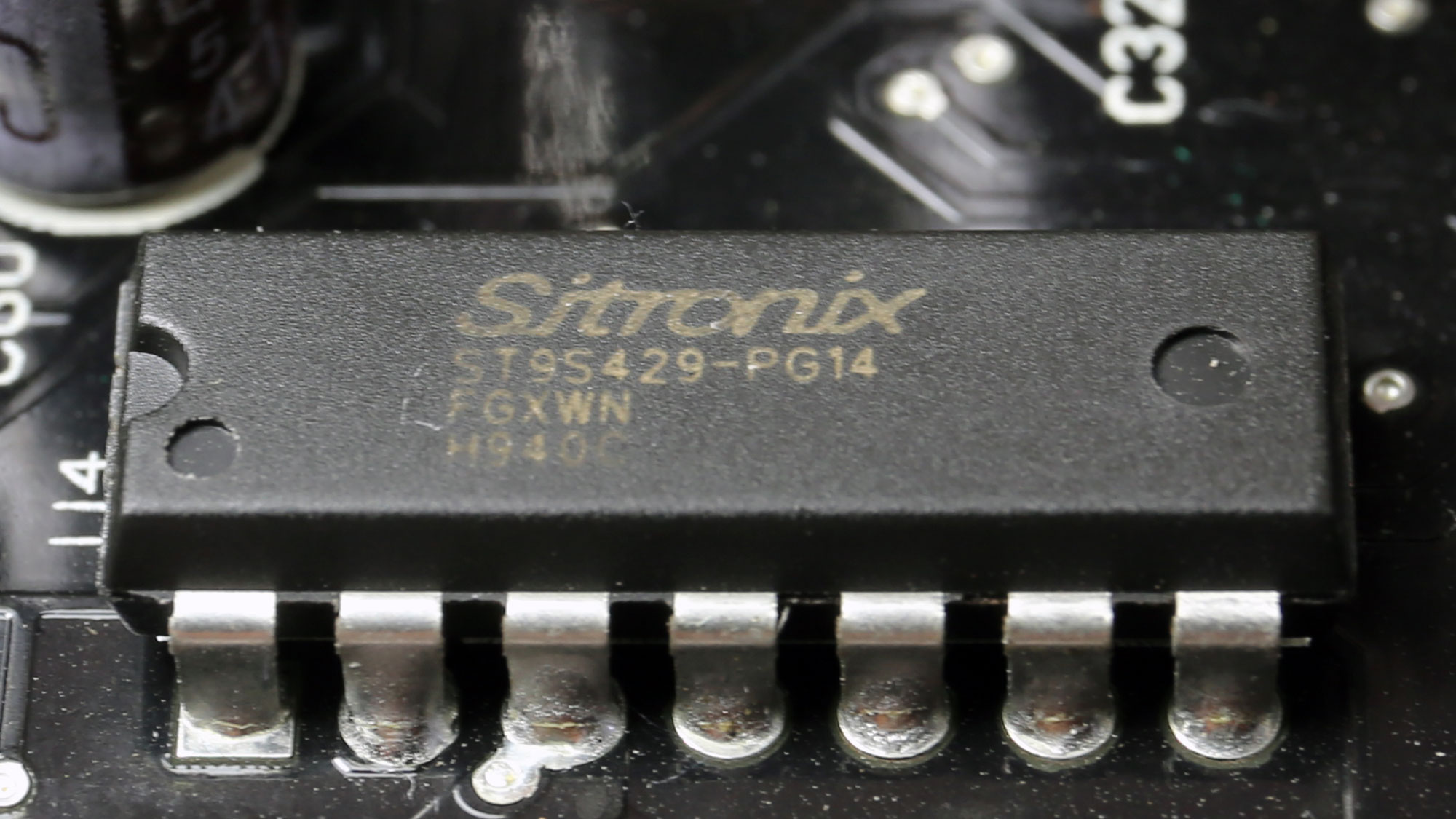
The supervisor IC is provided by Sitronix and supports all necessary protection features but OTP (Over Temperature Protection), which is implemented through another circuit.
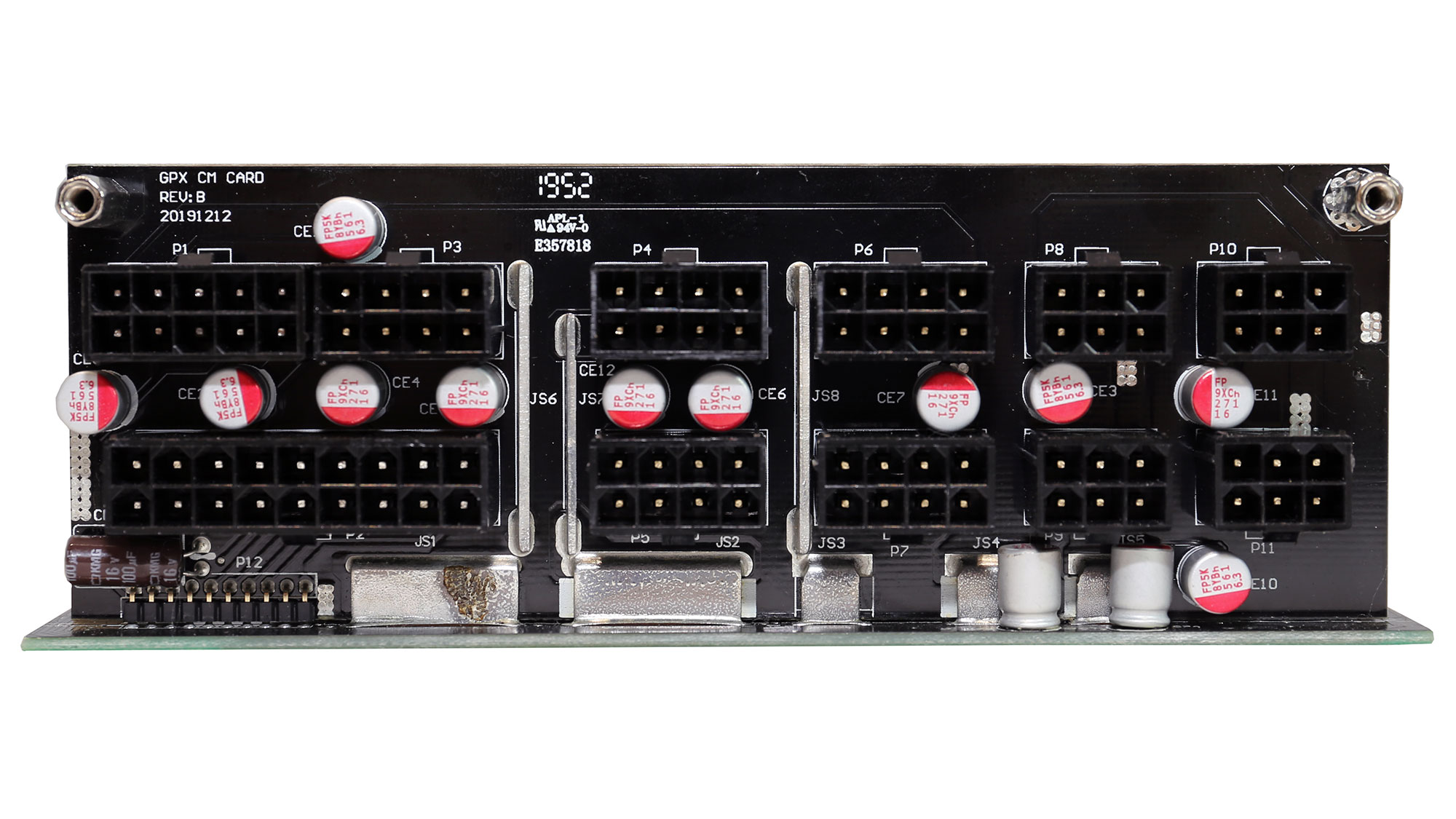
Modular board front


Several polymer caps are installed at the face of the modular board, along with several bus-bars that transfer power to the modular sockets.

Soldering quality

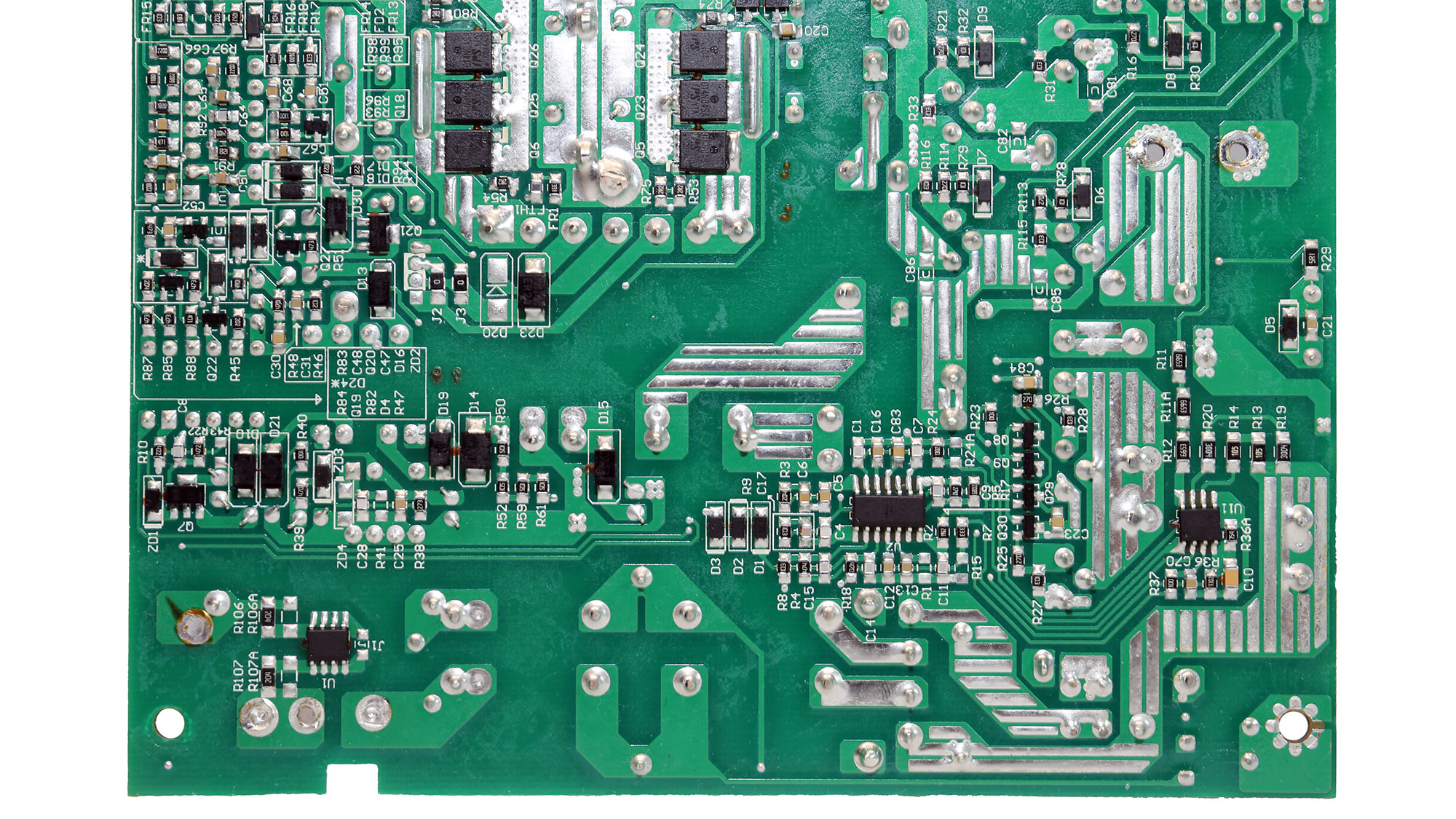

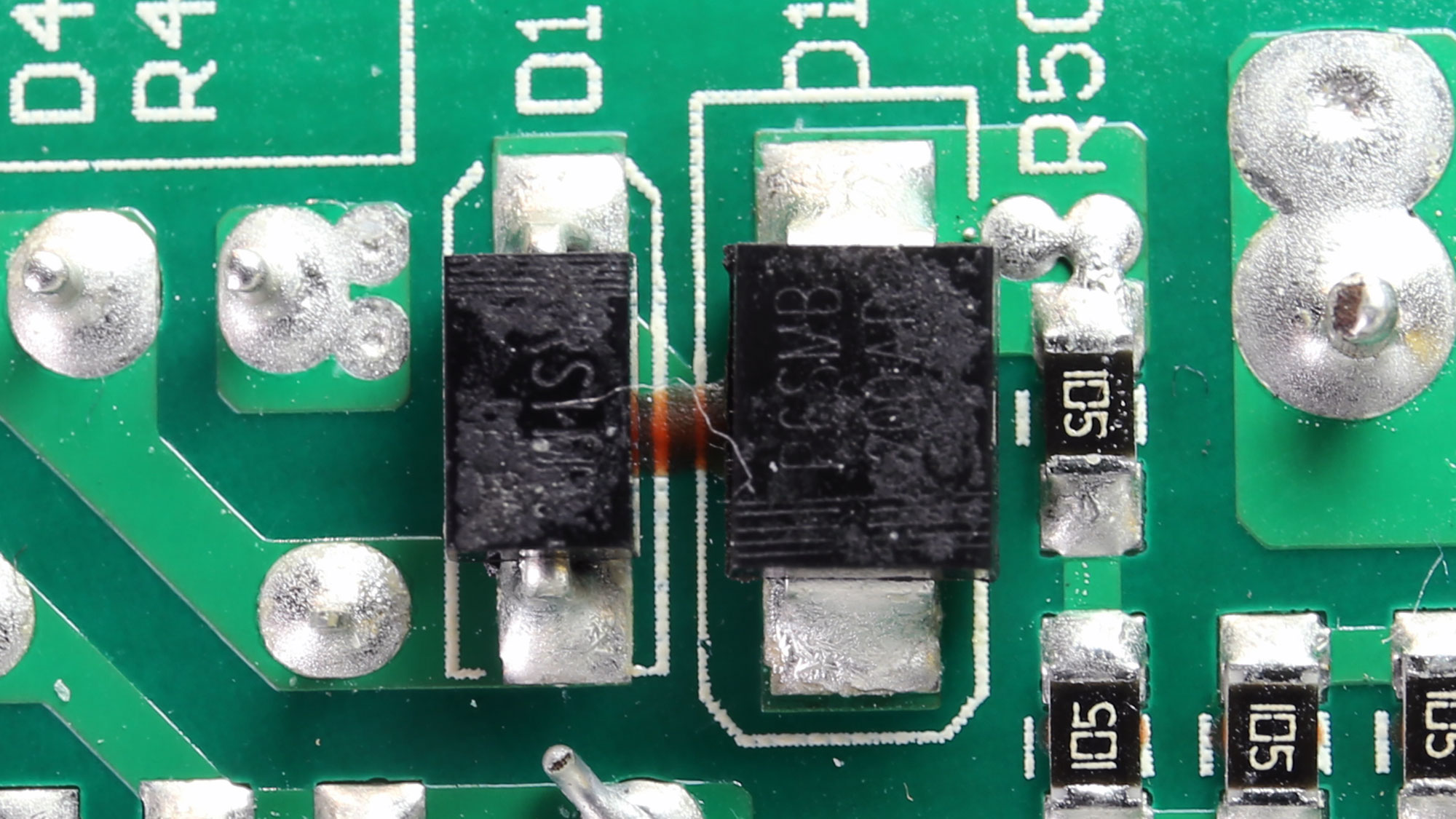


The soldering quality is very good. CWT has solid production lines.

Cooling fan

Most manufacturers have turned to Hong Hua because it offers high performance per buck products with satisfactory quality. This specific fan uses a rifle bearing, so under normal conditions, it will last for quite long.
MORE: Best Power Supplies
MORE: How We Test Power Supplies
MORE: All Power Supply Content
Current page: Specifications and Part Analysis
Next Page Load Regulation, Hold-Up Time, Inrush Current, Efficiency and Noise
Aris Mpitziopoulos is a contributing editor at Tom's Hardware, covering PSUs.